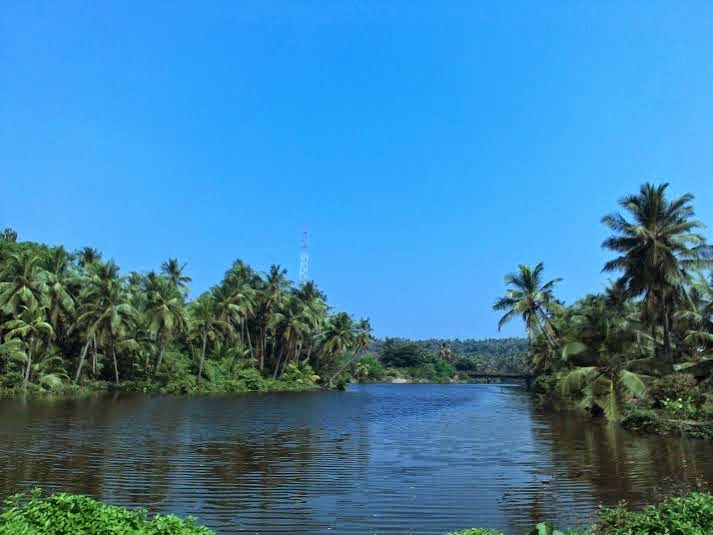
If the Brihanmumbai Municipal Corporation (BMC) has its way, Mumbai's next 20-year development plan will entail higher floor space index (FSI), an opening up of salt pans and no development zones to set up buildings, and skygardens on top of buildings to compensate for lack of open spaces. India's largest civic administration has chalked out this radical vision for Mumbai as it sets out to revise the city's development plan for the period 2014-2034.
Despite the city already bursting at its seams, with infrastructure that is way behind its growing population, the BMC has proposed highrise construction and using salt pan lands for residential, commercial or residential zones with "adequate infrastructural augmentation" among other drastic proposals like reclamation from the sea.
The civic body's 'vision' is spelled out in a global expression of interest (EoI) document that invites private consultants to help carry out existing land use survey, preparing population and employment projections, and compiling data pertaining to civic and transport infrastructure. However, activists aver that ordinary citizens should be consulted on any development plan.
At a seminar on Tuesday, industrialist and civic activist Cyrus Guzder told a gathering, which included civic chief Jairaj Phatak, that the development plan ought to be the plan of the people and not of those having a vested interest. "Such an important plan, which will be locked for the next 20 years, should be discussed and deliberated with citizens at the polling booth level," he added.
Besides opening up the salt pans, the BMC also wants to explore alternative means of augmenting land through conversion of no-development zones (NDZs) to commercial zones or residential zones with "adequate infrastructural augmentation". The civic administration also does not mind looking at the option of reclamation of land to "promote sustainable development within the framework of prevailing environmental regulations".
Another radical idea suggested by the BMC is the creation of "community skygardens" to compensate for the lack of open spaces in the city. Community skygardens are gardens set up on the terraces and podiums of residential buildings. BMC planners feel that this could be an answer to the open space shortage in Mumbai which is currently less than 0.03 acres per 1,000 people—the lowest in the world.
The BMC envisages a higher FSI for the city. "To study the concept of promoting highrise construction by evolving suitable urban design models, facilitating enhanced incentive FSI to accommodate the projected residential and commercial demand and at the same time favour development that reduces ground coverage in exchange for greater height, with a view to augment open space requirement," said the document which goes on to repeat the cliche of transforming Mumbai into a "world-class city with a vibrant economy and globally comparable quality of life for its citizens".
The BMC's vision is in line with the thinking of Mumbai's builder lobby, which has been persuading the powers that be to increase FSI and open up the last remaining open areas in the city like the salt pans for development purposes. The salt pans, spread over 5,000 acres in the suburbs, are eco-sensitive and act like natural sponges which absorb the water during heavy rains. In fact, only last month Union environment minister Jairam Ramesh, replying to a query by TOI on the salt pan lands, had said there was a view among the top political and government leadership in Delhi that salt pans should not be opened up for development.
Civic sources pointed out that the salt pan lands are protected areas, and inviting expressions of interest seeking conversion of this land into residential and commercial zones was violating protected area norms. "It is like asking for converting the Sanjay Gandhi National Park, a protected forest area, into a residential and commercial zone. If that is unacceptable then why should the destruction of salt pan lands be acceptable?" said sources.
Activist and architect P K Das pointed out that the Development Plan is not about skills of drawing and imaging but an assessment of the needs and demands of the city. "Can outsiders without active engagement of local agencies and communities decide for us how we should use our land and what should be the nature of our development?" he asked.
The Expression of Interest (EoI) is silent on the issue of local area participation. Industrialist Cyrus Guzder said the plan should be prepared at two levels. "At the official level, you have the strategists who set the vision for the city and at the polling booth level local residents, who plan and inform how their area should be developed. The two should then be integrated," he said. Inviting objections and suggestions from the public at the fag end does not serve any purpose, he added.
Das pointed out that every area was different and is historically an independent identity. "Bandra is as different from Juhu as is Chembur from Dharavi. Each area with local participation should be envisioned such that it fits in with the larger vision," he said.
According to Das, reclamation of land from the sea was a complete no-no. "At present, reconstruction is happening all over the city under various policies. This clearly shows that there is capacity for expansion on the existing land. What is required is an optimum use of land assessment," he said. "The city's main demand is for housing but the expansion is happening only in the upper segment and not in the lower segment. Even if more land is added, it may be diverted for other purposes and not the real demands of the city," he said.
Source: www.timesofindia.com

